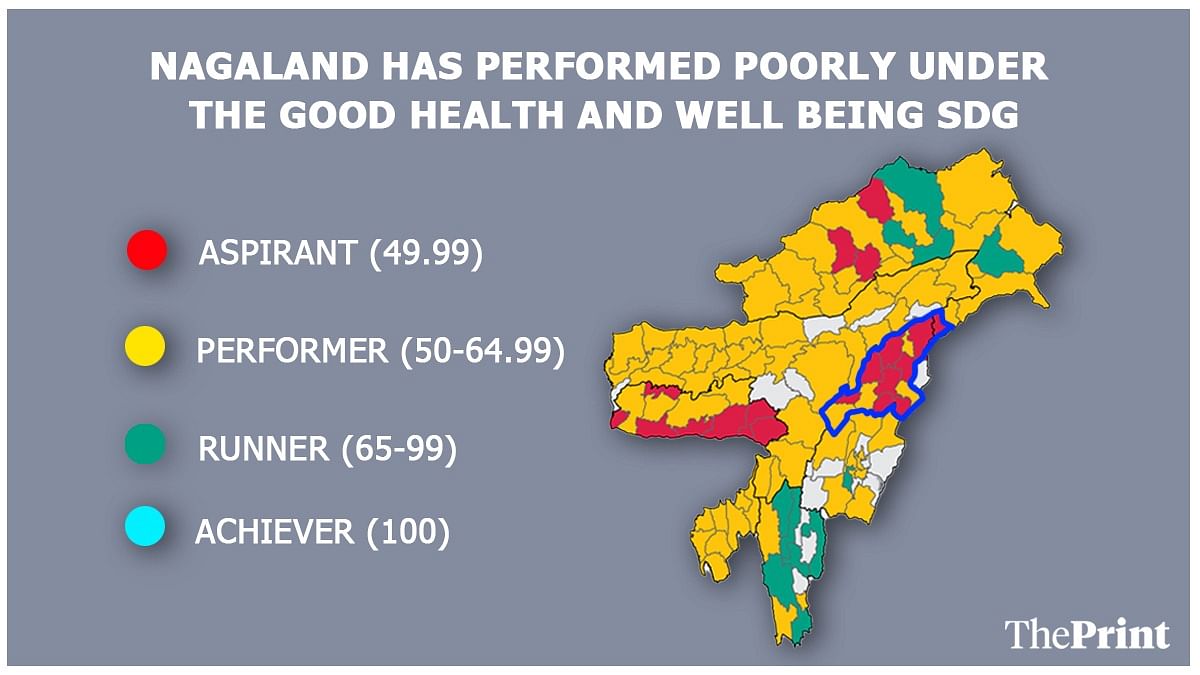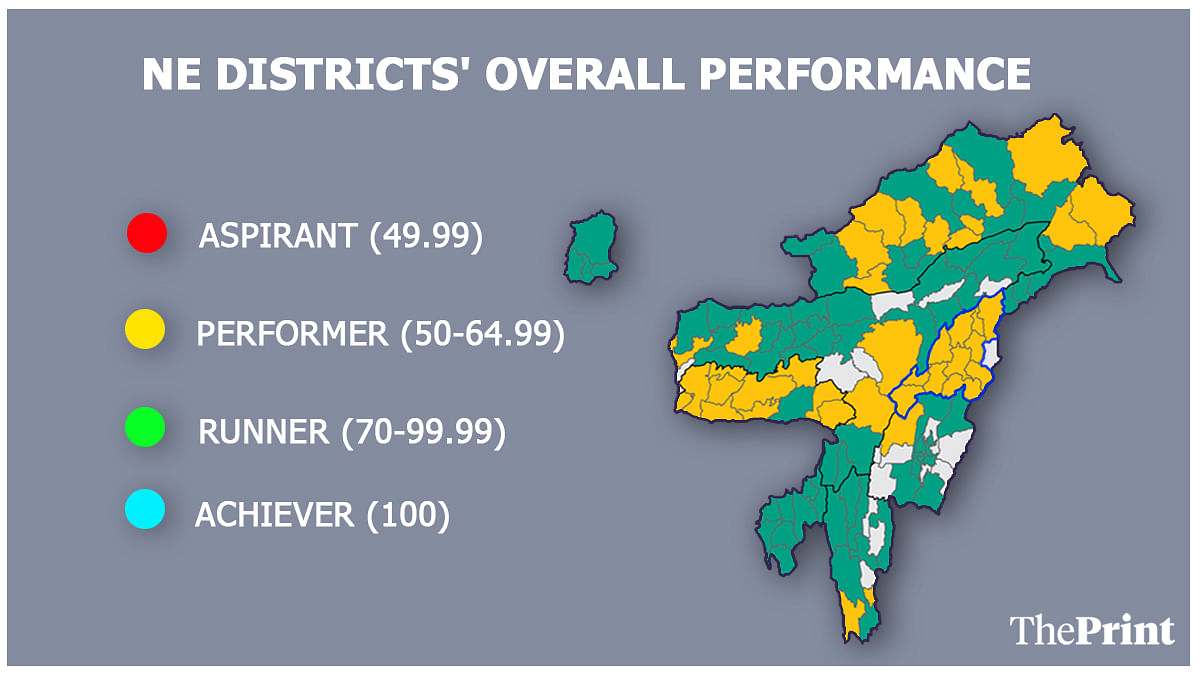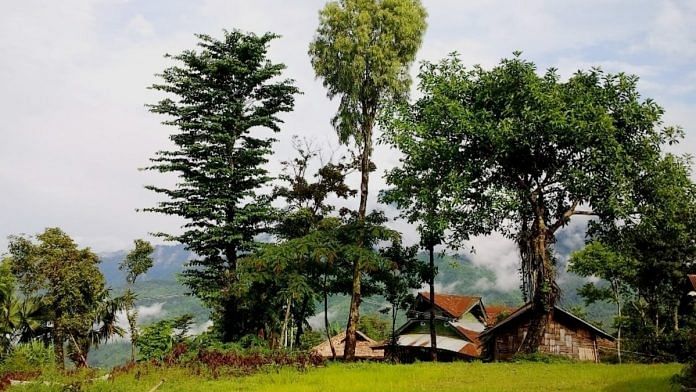New Delhi: With poor performances in poverty, health and affordable energy, Nagaland has emerged as the worst-performing state overall in the Northeast region, according to a report released by the NITI Aayog last week.
The first-edition of NITI Aayog’s Sustainable Development Goals (SDG) Index focusing on the North East Region (NER) places 12 of Nagaland’s districts in the ‘performer’ category of the index.
All districts of the seven states have been placed in one of four categories — aspirant (0-49), performer (50-64), front-runner (65-99), and achiever (100) — according to their performance vis a vis the goals in the report.
According to the index, Nagaland performed poorly in six goals — no poverty, good health and well-being, affordable and clean energy, sustainable cities and communities, industry and innovation and infrastructure.
The report also indicated a mixed performance by the state in quality education, reducing inequalities, climate action and peace, justice and strong institutions.
However, it has done well in the no hunger SDG, gender equality, clean water and sanitation, decent work and economic growth. The state has also excelled in the life on land SDG with just one district in the performer category and the rest under the front-runner category.

Experts from the region say Nagaland’s turbulent past, home to India’s longest insurgency, has given rise to a corrupt government and the absence of development.
“Though all states have a history of insurgency, insurgents have the most sizable control over the government in Nagaland. Tribal armed groups in Manipur have been in some form of peace talk the past 10 years. All other states in the northeast have not been facing any insurgency problems — which plays a key role because you cannot govern without their cooperation,” said Suhas Chakma, who hails from Tripura and is the director of Rights and Risks Analysis Group, an New Delhi-based think tank.
“Nagaland has an Opposition-less government, unheard across India, and this shows how conflict-struck the state is,” Sukma told ThePrint.
Nagaland is followed by Meghalaya in the index, which has all but one district — which is a front-runner — in the performer category.
Meanwhile, Mizoram, Tripura, all but two districts of Manipur, a majority of Assam and nearly half of Arunachal Pradesh fall under the front-runner category.

Also read: Meghalaya’s matriliny doesn’t help gender equality, fares poorly on Northeast SDG index
Insurgency in Nagaland
Nagaland’s six decade-long history of insurgency has often been blamed for being a major hurdle in the path of development and governance in the state. The beginning of the insurgency in what was then Naga territory coincided with India’s independence movement against the British in 1929.
“Under the banner of the ‘Naga Club’, the Nagas petitioned the Simon Commission that they should be left alone to determine their future as in the past and not forced to be ruled by Indians, who, they said, had never ‘conquered’ them,” notes Guwahati-based Centre for Development and Peace Studies (CDPS).
In 1975, the Shillong Accord was signed between the Government of India and the insurgents in the hopes of peace in the region. The accord related to unconditionally accepting the Indian Constitution as supreme, surrendering arms and letting go of the demand for independence from India.
However, it proved to be a futile effort as violence continued in the state even after it.
The National Socialist Council of Nagaland (NSCN), a separatist group, was formed in 1980 after the failure of the accord.
However, fissures arose between tribal groups and it split into factions that further broke down. One of these was the National Socialist Council of Nagaland — Isak Muivah (NSCN-IM), which came to be known as the “mother of all insurgencies” in the state.
While several peace and ceasefire attempts were made, tension persisted in the state.
“Between 1992 and 2014 (till 2 March), at least 2456 insurgency related fatalities have been recorded in Nagaland,” CDPS notes.
The NSCN-IM recently resumed talks with the Indian government in August last year but its demand for a separate flag and constitution continues.
Also read: Sikkim, Tripura districts top NE Sustainable Development Goal index, Nagaland, Arunachal come last
Vicious cycle of corruption in elections in Nagaland
According to CDPS, violence due to insurgency impacted “all sectors of governance and lives of the common people”.
Khekiye K. Sema Nagaland, a former IAS officer who authored the book ‘Encountering LIFE’ on life in Nagaland in the 1980s and 1990s, echoed this sentiment.
“The democratic process in Nagaland is on a rather vicious cycle of election within which you perpetuate corruption by compulsion,” Sema told ThePrint.
Explaining the corrupt government and political system in Nagaland, he alleged that no votes in Nagaland are for free. “When an elected candidate takes office, they have to make up for the electoral investments. This is when all rules and regulations are thrown out the window,” Sema said.
Underlining the role insurgent factions play in the electoral process, he argued that the state government has become subservient to them. “The government pays the insurgents quite heavily to get their allegiance and support. While fractions openly declare that they’re not bothered about Indian elections.”
“How can a state perform properly in any sector when such a system exists? Corruption has become a way of life, and nobody can do anything about it. Under these circumstances, no government will be able to perform,” Sema added.
Also read: Delay in Naga peace process is intentional and suits NSCN(I-M) chief Muivah



